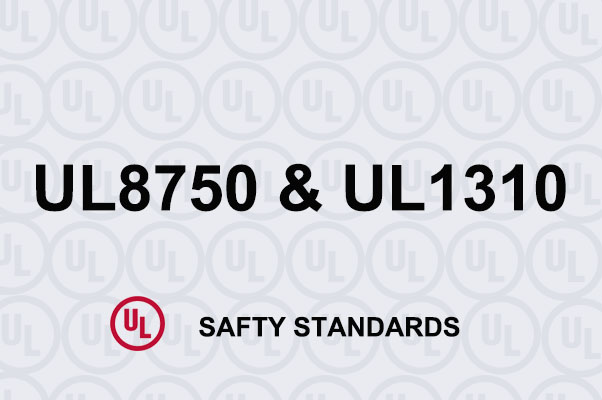In the world of LED lighting and power supplies, safety and performance standards are crucial to ensure product reliability and user safety. Two important standards often referenced are UL8750 and UL1310. This article will provide a detailed overview of these standards, their significance, and their application in LED drivers and power supplies.
What is UL?
Underwriters Laboratories (UL) is an organization that sets standards for product safety and performance. UL standards are widely recognized and often mandatory for electrical and electronic products sold in North America. Compliance with these standards ensures that products meet specific safety criteria, reducing the risk of electrical hazards.
UL8750: Safety Standard for LED Equipment
Overview
UL8750 is a comprehensive safety standard specifically designed for light-emitting diode (LED) equipment. It covers the electrical, mechanical, and thermal safety aspects of LED modules, arrays, and controllers used in lighting products.
Key Features
- Electrical Safety: Ensures that the LED equipment operates safely within the electrical parameters, protecting against risks like electric shock and fire.
- Mechanical Safety: Covers aspects like the construction and durability of LED products, ensuring they can withstand physical stresses.
- Thermal Management: Addresses the thermal performance of LED equipment to prevent overheating, which can lead to failures or safety hazards.
Application
UL8750 is applicable to a wide range of LED products, including:
- LED modules and arrays
- LED controllers and drivers
- Integrated LED luminaires
Compliance with UL8750 helps manufacturers ensure that their LED products are safe for consumer use and meet industry standards.
UL1310: Safety Standard for Class 2 Power Units
Overview
UL1310 is a safety standard for Class 2 power units. These are power supplies that are designed to limit the output to a safe level, reducing the risk of electric shock and fire. Class 2 power supplies are typically used in applications where electrical safety is a concern, such as in residential and commercial lighting.
Key Features
- Current and Voltage Limitation: Ensures that the power supply limits the output current and voltage to safe levels, typically under 60V DC and 100VA.
- Overcurrent Protection: Includes features that protect against overcurrent conditions, preventing potential hazards.
- Thermal Protection: Ensures that the power supply can manage heat effectively to prevent overheating and potential fire risks.
Application
UL1310 is used for power supplies that feed low-voltage circuits, including:
- LED drivers and power supplies for residential and commercial lighting
- Power units for HVAC controls
- Power supplies for home automation systems
Compliance with UL1310 ensures that these power units are safe for use in environments where users may come into contact with the devices.
Differences and Complementary Use
While UL8750 focuses specifically on LED equipment, UL1310 pertains to the broader category of Class 2 power units. LED drivers, particularly those intended for use in residential or commercial environments, often need to comply with both standards.
- UL8750:
- Scope: LED modules, arrays, and controllers
- Focus: Electrical, mechanical, and thermal safety of LED equipment
- UL1310:
- Scope: Class 2 power units
- Focus: Limiting output current and voltage to ensure safety in low-voltage applications
Conclusion
Compliance with UL8750 and UL1310 standards is essential for manufacturers of LED lighting products and power supplies. UL8750 ensures the safety and reliability of LED equipment, while UL1310 focuses on the safety of Class 2 power units. Together, these standards help ensure that LED products are safe, reliable, and suitable for consumer use.
Understanding and adhering to these standards not only helps in meeting regulatory requirements but also enhances consumer confidence in the safety and performance of LED lighting products.
